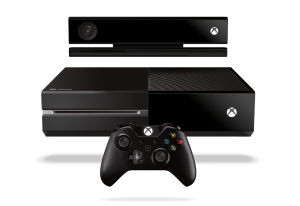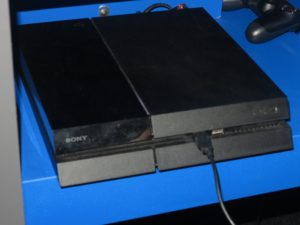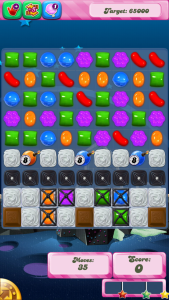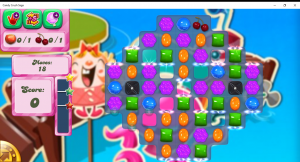 The games console that plugs in to the TV needs to be improved to become more socially relevant. Typically these devices are improved beyond doubt using the latest technology and become a multimedia console, but there are certain issues that need to be continually resolved when it comes to playing games which these devices are built for.
The games console that plugs in to the TV needs to be improved to become more socially relevant. Typically these devices are improved beyond doubt using the latest technology and become a multimedia console, but there are certain issues that need to be continually resolved when it comes to playing games which these devices are built for.
Improved targeting beyond the usual users
Making console gaming appeal to people other than teenage and young-adult males
A situation that still occurs with console gaming is that it is focused towards the teenage and young-adult male audience. Here, most of the games available for these consoles are the action-adventure titles and the marketing that goes on is typically focused at this audience.
This is although the multimedia functionality associated with the games consoles such as optical disc / network media playback or access to online media services is being exposed as valuable functions for everyone.

The XBox One – representative of today’s games consoles
Ways that I would see to improve on this would include giving equal attention and marketing space to game titles that appeal to other audience classes as well as pitching consoles at age groups other than this class. Nintendo are working towards this with the Wii by implementing the Wii Fit peripherals as for the whole family and Sony had a go with issuing music games for the PlayStation 2 which had “across-the-board” appeal. Similarly there have been attempts to use the music and dance games like the Singstar, Rock Band, Guitar Hero and DJ Hero franchises to open up the games consoles beyond the usual audience and diet of games.
There have been remarks that computer gaming does fit in well with the older people more as a way of improving and keeping alive cognitive and problem-solving skills. But this class of user does tend to work with mobile devices, especially tablets as a gaming platform due to the user interface being more intuitive.
Older men do show some interest in the sports titles especially those that reflect their favourite sports but find that these games aren’t intuitive to play. This is more so due to a controller that they may find very confusing to use which I had noticed when a young man hired a cricket game for his PlayStation console and an older man who is interested in cricket, especially Test cricket, tried to play this game on the console but found the user-interface very confusing.
One way to make it intuitive would be to subject some of the games that appeal to the older audience to useability testing involving this class of audience using the consoles and controllers that they are being pitched to.
Similarly, a strong effort to develop and market console-based games titles for young female audiences as well as mature and older audiences could expose the games to these people. This includes having the gaming fraternity encourage situations where older people and younger people play together on these consoles and writing this in to the marketing fabric for the consoles and games titles. It also includes older people and younger people existing in the same online gaming groups or clans during particular games.
Lately there have been efforts to get women involved in the computer-games scene, both in developing these games and playing them. This has caused significant issues with established male figureheads in this scene leading to the GamerGate controversy concerning harassment of women game developers and misogyny in the video-game industry. It shows that the concept of making games appeal to more than just the young mail player is rattling some cages in the console and regular-computer gaming fraternity.
Improved player-help functionality
One way to make games consoles acceptable to more people would be to improve the learning curve required for one to effectively “get the hang” of a particular game. This is especially where the player interacts with the game using a handheld controller while seeing the effects of what they do on the TV screen.
In-play help functionality
One way would be to provide in-game help functionality where a user can press a button on their controller to obtain information on the game’s user interface or how to perform certain procedures. This could be set so that the gameplay can pause or continue as the user seeks help.
It can be simplified through the use of an always-available on-screen “popup” that shows what each controller button / stick does during their play. Newer consoles that exploit a “second-screen” function that is provided by a tablet or smartphone running a special application can use this function as a way of providing user-interface help to novice players.
Controller design that supports local screen or dynamic labelling
Similarly a control device can use a local screen or e-ink-based dynamic-labelling to label controls with terms specific to the game. This could be to indicate functions important for manipulating a batsman or bowler in a cricket game or the driving interface in a racing game.
Player-assist functionality
Another method of providing improved help function would be to provide support for player assist. This is where an advanced player can use their controller to help a novice player in a similar vein to the “dual-controls” practice that is implemented by driving schools where the vehicle used for teaching a learner driver is equipped with an extra set of pedals for use by a driving instructor.
Technical improvements
Bluetooth headsets compliant with standard Bluetooth Profiles
A games console could benefit from the Bluetooth Headset Profile by allowing these headsets to be used for inter-player chatter during an online game. Similarly. the Bluetooth A2DP Profile could come in to its own with a console for directing in-game music and sound effects to a stereo headset for private gameplay.
This may not wash well with games-console manufacturers who work on the loss-leading principle of product sales. Here, they place value on selling the consoles cheaper so that they can recoup the costs on the accessories or games that are licensed for their consoles or on the membership fees associated with their online services.
UPnP AV / DLNA media sources as part of game fabric
Some games can benefit from access to media resources hosted on one’s home network. This can be facilitated through the UPnP AV / DLNA network-media-discovery technology with this functionality written in to the game’s software or calling upon DLNA application-programming interfaces that are part of the console’s operating system.
The obvious examples for this would be a user-selectable music soundtrack for some game types such as “street-racing” or cue-sports (pool / billiards / snooker) games. The classic example would be a pinball or pool game that implements a “virtual jukebox” as a tool for selecting background music in the game. Here, it would mimic the jukebox that is found in a seedy pool hall or pinball parlour and the music that plays sets the scene of that venue. Picture-puzzle casual games can also benefit from UPnP AV / DLNA for finding pictures via the home network.
Continual work on force-feedback for player controls
A criticism that I have heard regarding racing and driving games in the context of younger people learning to drive is that they operate the car they are learning on as if they are driving in a video game. This is where they “throw down” the gear-shift when they change gears rather than slowing gearing out to neutral then to the gear they want for example.
The same complaints may be raised by flying instructors with the way young novice pilots operate the Cessnas they learn on due to the popularity of those flight-simulator games.
This is brought about by driving interfaces used with these games that don’t closely mimic a real car’s controls. For example, changing gears through most driving interfaces doesn’t resemble the typical shifting gate offered by most manual gearboxes nor does it resemble the gear-selector behaviour of the typical automatic transmission. This is brought around due to joysticks that “spring back” to centre rather than staying in a particular position and no force-feedback that resembles the user experience of a gearbox. Similarly, the steering wheels on these interfaces don’t satisfy the “many turns lock-to-lock” that a real vehicle’s steering wheel offers which allows for granular control on the road.
These kind of issues can be augmented as players play games that implement many different cars, especially where players can change car components so as to “soup-up” their competition cars. This kind of play has been exemplified through the earlier games in the “Need For Speed” series where players could load in car profiles that represented real cars, or most of the “street-racing” games that provide the players with a choice of cars to complete their conquests with.
The playing experience for driving and other games can be improved upon by games and hardware vendors working on force-feedback controls in the regular-computer and console gaming arenas. This involves working on systems that provide the appropriate counter-force in flying and racing control systems that mimic mechanical feedback thus working towards “real-world” experience.
This issue can be a way of improving the intuitiveness of these games when their experience is closer to replicating real vehicles and craft thus opening them up to more players across the board.
Conclusion
Although the games consoles are becoming technically better, there still is a lot of unfinished business when it comes to increasing the appeal of games on the mainstream TV-based console setups to more people.








